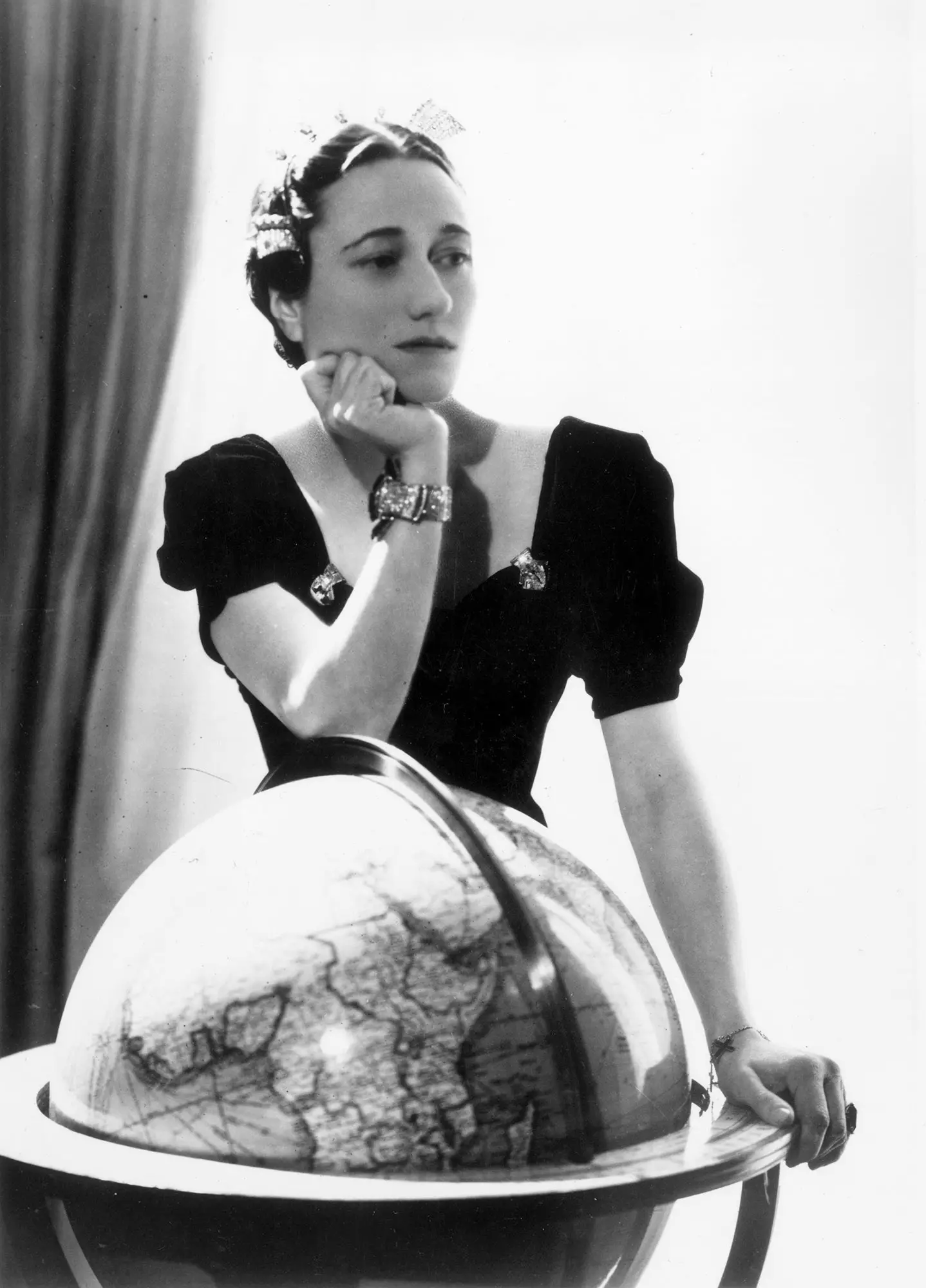
Wallis Simpson, Duchess of Windsor (1896-1986), wearing her Cartier engagement ring and sapphire and diamond bracelet.
In 1904, a time when pocket watches were round, Cartier created a square watch for the wrist, which he named Santos. The Maison's design vision has changed our concept aesthetic, with the creation of recognizable, timeless pieces rooted in their own history. Now and for the next three weeks, it is possible celebrate these objects –contemporary and classic at the same time– that have made the jewelery and watch firm the owner of so many cult objects.
The Cartier Pavilion of Design proposes an innovative exhibition concept, open to the public until June 20 at the Casa de Vacas Cultural Center in Madrid's Retiro Park. For the first time, the most emblematic creations of the luxury house, present throughout the world through its 265 boutiques, will be brought together: we refer to Santos de Cartier, Tank, Trinity, Love, Juste un Clou, Panthère de Cartier and Ballon Bleu de Cartier.
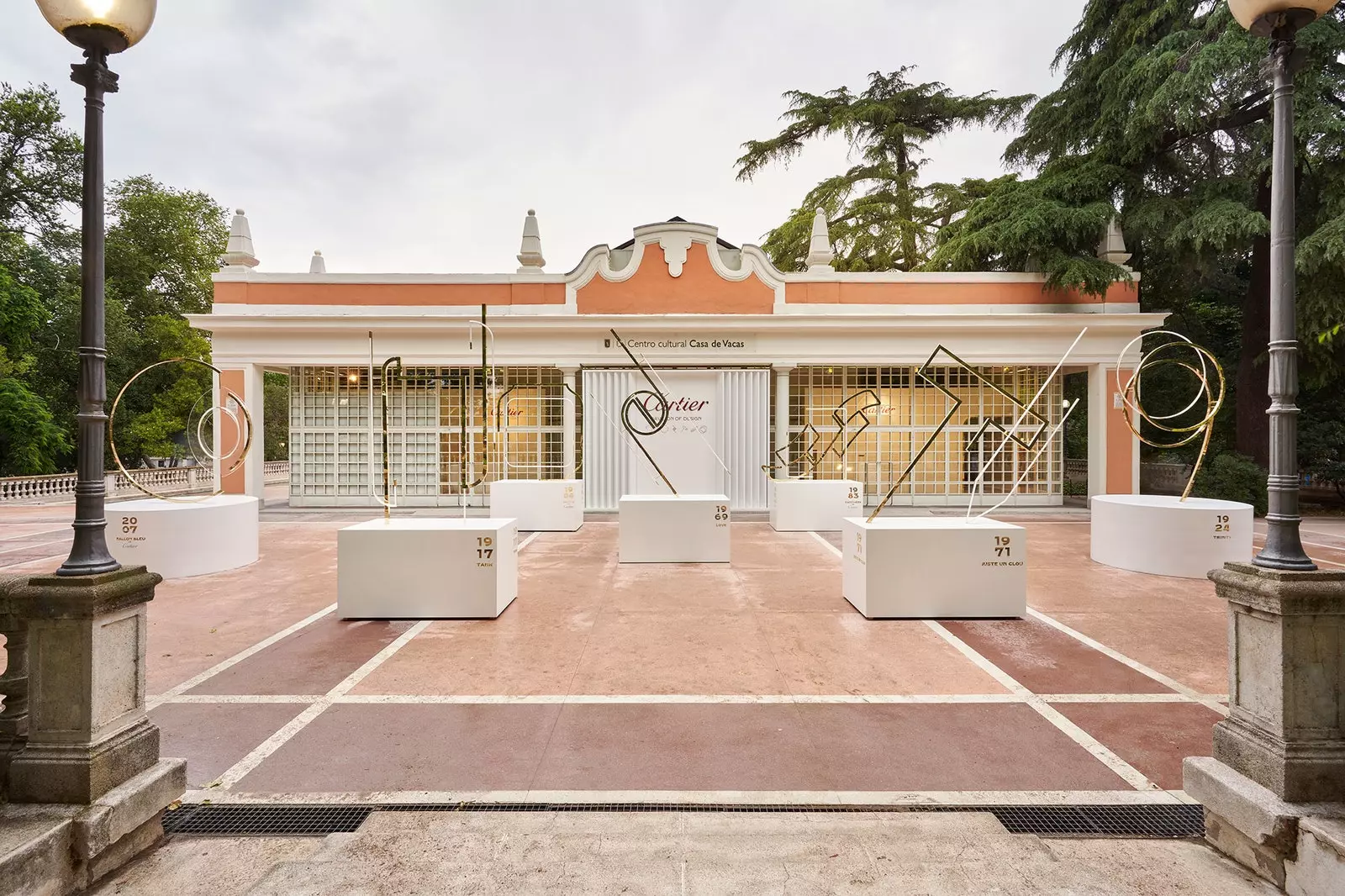
Facade of the Cartier Pavilion of Design in El Retiro, Madrid.
Through an interactive and immersive experience, visitors can discover the design evolution of these creations over time and how these fall within the four great principles of creation: the purity of the line, the precision of the form, the exactness of the proportions and the beauty of the details.
In addition, the Pavilion of Design exhibits different pieces from the Cartier Collection, which brings together some of the most emblematic works that the Maison has created throughout its history, such as the Duchess of Windsor's Love bracelet, Wallis Simpson, or the Nail bracelet designed by Aldo Cipullo for Cartier New York in 1971, a design that has been rejuvenated since 2012 with the Juste un Clou collection.
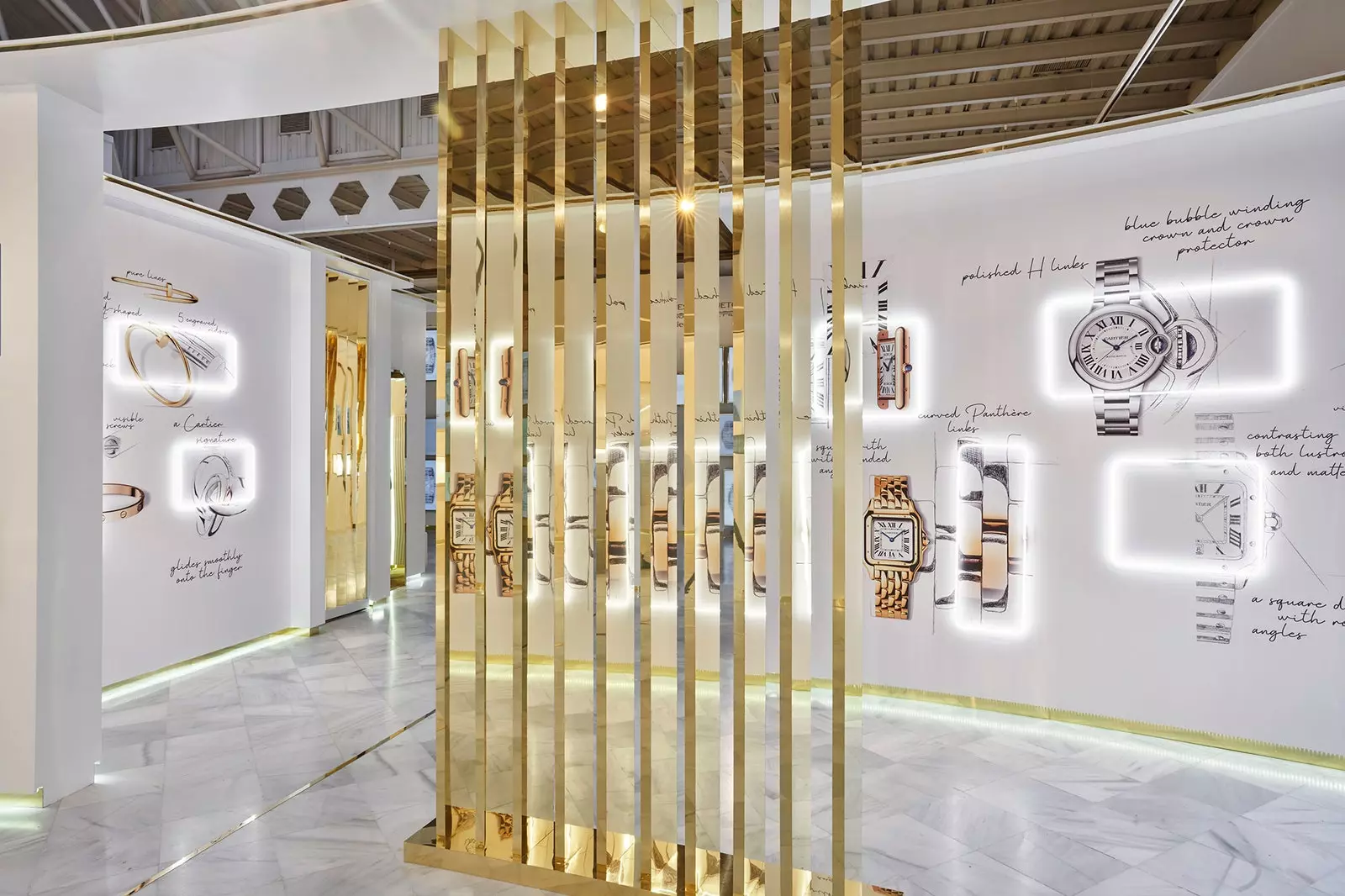
The exhibition offers an interactive and immersive journey through the Maison's design history.
The audiovisual installation #MyCartierDesign invites actively participate in it to visitors, with the aim of arousing their curiosity and inviting them to reflect on what each design represents in their memory and in their emotions, all through an interactive experience. At the same time, #MyCartierDesign welcomes testimonials from personalities belonging to different professional worlds, that narrate in the first person their personal and emotional bond with these designs.
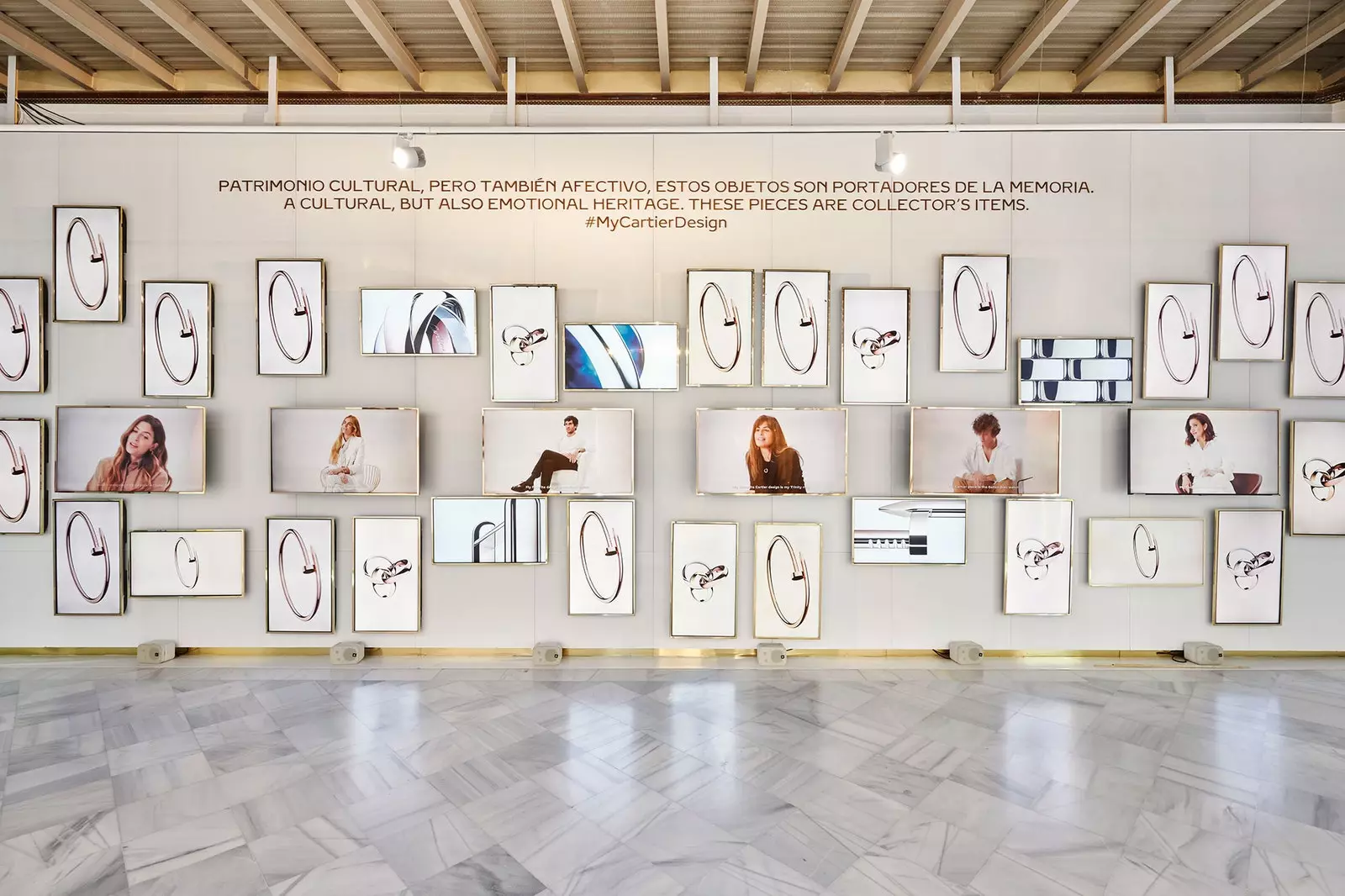
Juste un Clou, Panthère, Santos... design icons to rediscover in the Retiro exhibition...
The city of Madrid is the first to host the Pavilion of Design of Cartier. “It will be a real pleasure to welcome all visitors who come to the Pavilion. All of them they will be able to experience, in a totally innovative space, some of the iconic creations that have marked so much the history of the Maison such as jewelry and watchmaking and, at the same time, they will discover the culture of design that lies behind the identity and uniqueness of Cartier”, comments Nicolas Helly, General Director of Cartier Iberia.
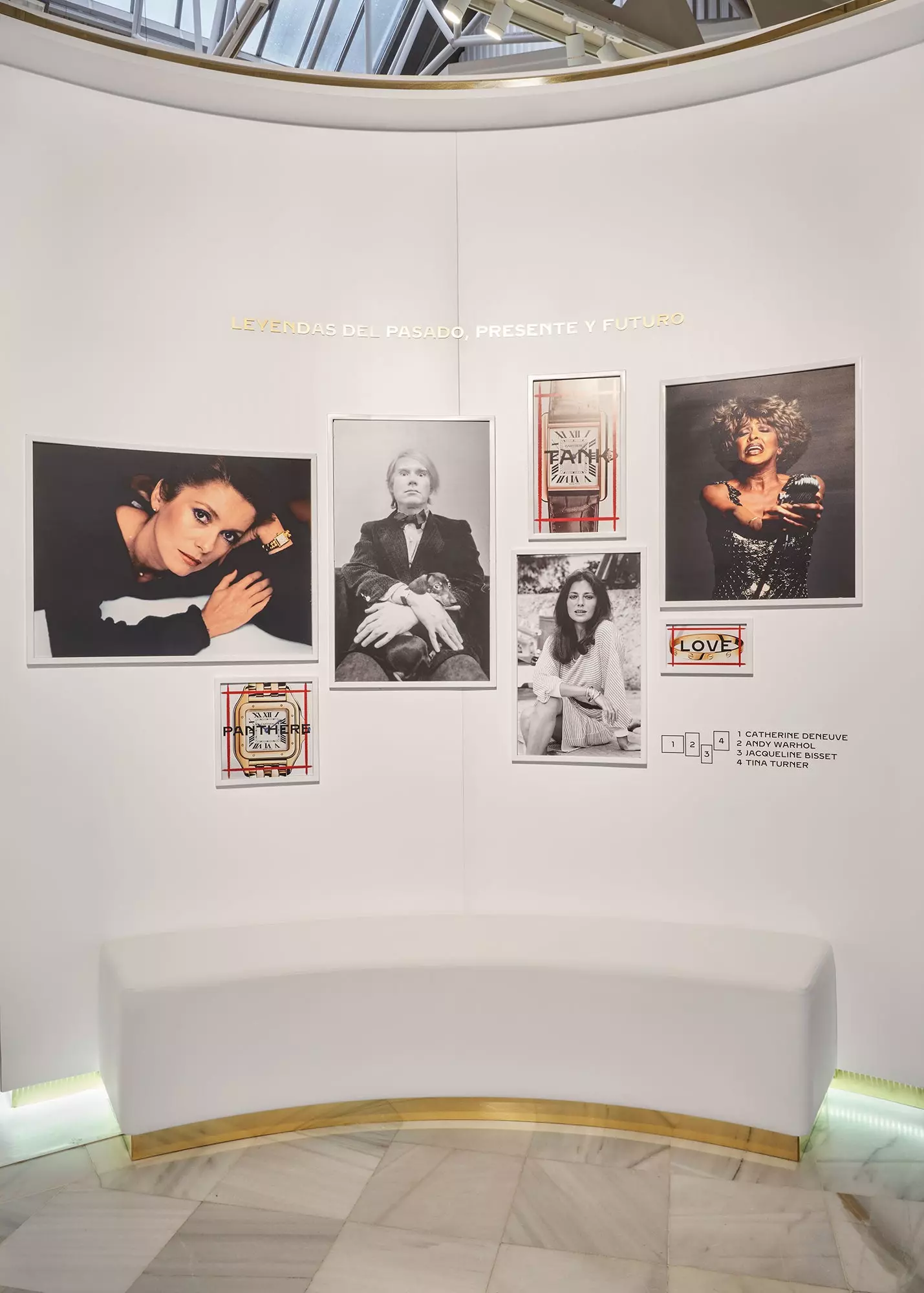
The emotions of those who have worn Cartier's pieces (and those of the visitor himself) are the protagonists of the exhibition.
THE ICONS OF THE MAISON
Among the pieces that star in the exhibition, In addition to Santos, we can discover Juste un Clou, sublimation of the purity of a common shape (a simple nail), transformed into a jewel. The accuracy of the proportions of this bracelet, designed by Aldo Cipullo in New York in the 1970s, allows the oval to adapt and wrap around the wrist.
We have already spoken on occasion of the audacity of the Tank, whose line obeys Louis Cartier's desire to define the shape of a new watch in 1917. The two parallel stretchers, inspired by the design of a military tank seen from above, represent the caterpillar tracks and the body, the vehicle's interior. The design of the hooks on the case is now integrated into the extension of the bracelet without breaking the rhythm.
They are also present in the exhibition the Ballon Bleu (2007, a new vision of the circle, doubly convex), the Trinity ring (1924, consisting of three movable interlocking rings of tricolor gold), the legendary Panthère clock (1983, a square with rounded corners) and Love (1969, Aldo Cipullo's oval bracelet consisting of two flat, rigid arches).
The exhibition has an uninterrupted schedule Monday to Sunday from 10 a.m. to 9:30 p.m.
